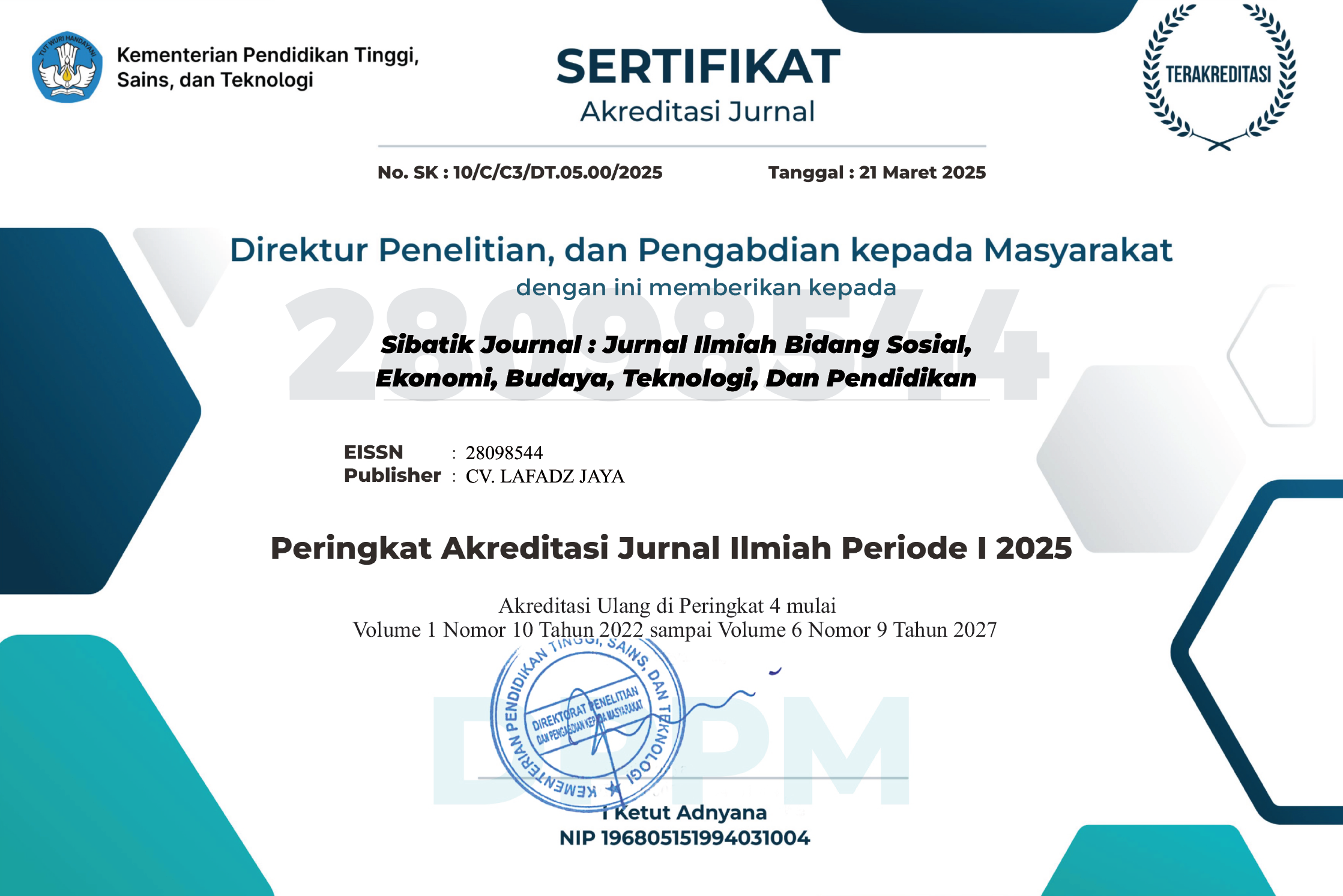MASALAH KESEHATAN WISATAWAN DI BALI: STUDI TENTANG DAMPAK “BALI BELLY” TERHADAP PENGALAMAN DAN CITRA DESTINASI
Main Article Content
Ida Bagus Ketut Soma Antara
I Gusti Ayu Eka Suwintari
Anak Agung Ayu Arun Suw Arianty
Bali Belly, a digestive disorder commonly experienced by tourists in Bali, poses a significant challenge to the island’s reputation as a global tourism destination. This study aims to explore how Bali Belly affects tourist experiences and the image of Bali as a travel destination. Employing a qualitative approach with a phenomenological method, this research delves into the subjective perceptions and lived experiences of affected international tourists. Data were collected through in-depth interviews, participatory observations in high-incidence areas (such as Kuta, Seminyak, Canggu, and Ubud), and content analysis of online reviews. The findings reveal that Bali Belly not only disrupts tourists’ physical comfort and activity schedules but also triggers negative perceptions widely disseminated through social media and travel platforms. Major risk factors include poor sanitation, low hygiene standards in food establishments, and a lack of health awareness among both tourists and local businesses. Nevertheless, many visitors continue to view Bali positively due to its natural beauty and rich cultural heritage. This study highlights the importance of improving sanitation infrastructure, enhancing hygiene education, and fostering multi-stakeholder collaboration to manage health risks and sustain Bali’s competitiveness in the global tourism industry.
Aido Health. (n.d.). Apa itu Bali Belly dan bagaimana cara menghindarinya? Retrieved from https://aido.id/health-articles/apa-itu-bali-belly-dan-bagaimana-cara-menghindarinya/detail
Alodokter. (n.d.). Waspadai Bali Belly, gangguan pencernaan yang sering menyerang turis. Retrieved from https://www.alodokter.com/waspadai-bali-belly-gangguan-pencernaan-yang-sering-menyerang-turis
Antara, I. B. K. S. (2022). Eksistensi dalam globalisasi: Peran wisata kuliner dalam pengembangan pariwisata berkelanjutan di Sanur. Journal of Tourism and Interdisciplinary Studies (JoTIS), 2(1), 11–20.
Antara, I. B. K. S., & Mandala, N. A. T. (2023). Analisis penerapan konsep quality tourism di Bali dari sudut pandang sinergitas pentahelix pariwisata. Jurnal Manajemen Perhotelan dan Pariwisata, 6(2), 763–767.
Antari, N. P. R. D., Suarningsih, N. K. A., & Puspita, L. M. (2024). Faktor-faktor yang berhubungan dengan kejadian Bali Belly pada wisatawan mancanegara di kawasan wisata Pantai Pandawa. Coping: Community of Publishing in Nursing, 12(1), xx–xx. Retrieved from https://ojs.unud.ac.id/index.php/coping/article/download/99670/54404
Braun, V., & Clarke, V. (2006). Using thematic analysis in psychology. Qualitative Research in Psychology, 3(2), 77–101.
Chen, C.-F., & Chen, F.-S. (2010). Experience quality, perceived value, satisfaction and behavioral intentions for heritage tourists. Tourism Management, 31(1), 29–35. https://doi.org/10.1016/j.tourman.2009.02.008
Cohen, E. (1979). A phenomenology of tourist experiences. Sociology, 13(2), 179–201.
Creswell, J. W. (2013). Qualitative inquiry and research design: Choosing among five approaches. Sage.
Denzin, N. K. (1978). The research act: A theoretical introduction to sociological methods. McGraw-Hill.
DetikHealth. (2023, March 10). Fakta Bali Belly, penyakit khas bule yang dialami Verrell Bramasta sampai opname. Detik Health. Retrieved from https://health.detik.com/berita-detikhealth/d-6548913/fakta-bali-belly-penyakit-khas-bule-yang-dialami-verrell-bramasta-sampai-opname?page=2
Echtner, C. M., & Ritchie, J. R. B. (1993). The measurement of destination image: An empirical assessment. Journal of Travel Research, 31(4), 3–13. https://doi.org/10.1177/004728759303100402
Faulkner, B. (2001). Towards a framework for tourism disaster management. Tourism Management, 22(2), 135–147. https://doi.org/10.1016/S0261-5177(00)00048-0
Gartner, W. C. (1994). Image formation process. Journal of Travel & Tourism Marketing, 2(2–3), 191–216.
Hall, C. M. (2006). Crisis management in tourism: A review of the emerging literature. In Y. Mansfeld & A. Pizam (Eds.), Tourism, security and safety: From theory to practice (pp. 135–158). Butterworth-Heinemann.
Han, H., Hsu, L.-T., & Sheu, C. (2015). Application of the Theory of Planned Behavior to green hotel choice: Testing the effect of environmental friendly activities. Tourism Management, 33(4), 662–671. https://doi.org/10.1016/j.tourman.2011.07.003
Hello Sehat. (n.d.). Bali Belly: Penyebab, gejala, dan cara mengatasinya. Retrieved from https://hellosehat.com/pencernaan/pencernaan-lainnya/bali-belly
Krippendorff, K. (2018). Content analysis: An introduction to its methodology (4th ed.). Sage Publications.
Lepp, A., & Gibson, H. (2003). Tourist roles, perceived risk and international tourism. Annals of Tourism Research, 30(3), 606–624. https://doi.org/10.1016/S0160-7383(03)00024-0
Lincoln, Y. S., & Guba, E. G. (1985). Naturalistic inquiry. Sage.
Patton, M. Q. (2002). Qualitative research and evaluation methods. Sage.
Pine, B. J., & Gilmore, J. H. (1999). The experience economy: Work is theatre & every business a stage. Harvard Business Press.
Reisinger, Y., & Mavondo, F. (2005). Travel anxiety and intentions to travel internationally: Implications of travel risk perception. Journal of Travel Research, 43(3), 212–225. https://doi.org/10.1177/0047287504272017
Spradley, J. P. (1980). Participant observation. Holt, Rinehart, and Winston.
Steffen, R., Hill, D. R., DuPont, H. L., & Greenough, W. B. (2003). Traveler’s diarrhea: A clinical review. JAMA, 291(1), 119–123. https://doi.org/10.1001/jama.291.1.119
Tung, V. W. S., & Ritchie, J. R. B. (2011). Exploring the essence of memorable tourism experiences. Annals of Tourism Research, 38(4), 1367–1386.
Walls, A. R., Okumus, F., Wang, Y., & Kwun, D. J.-W. (2011). An epistemological view of consumer experiences. International Journal of Hospitality Management, 30(1), 10–21. https://doi.org/10.1016/j.ijhm.2010.03.008
World Health Organization. (2021). Food safety. https://www.who.int/news-room/fact-sheets/detail/food-safety
Xiang, Z., & Gretzel, U. (2010). Role of social media in online travel information search. Tourism Management, 31(2), 179–188. https://doi.org/10.1016/j.tourman.2009.02.016

























